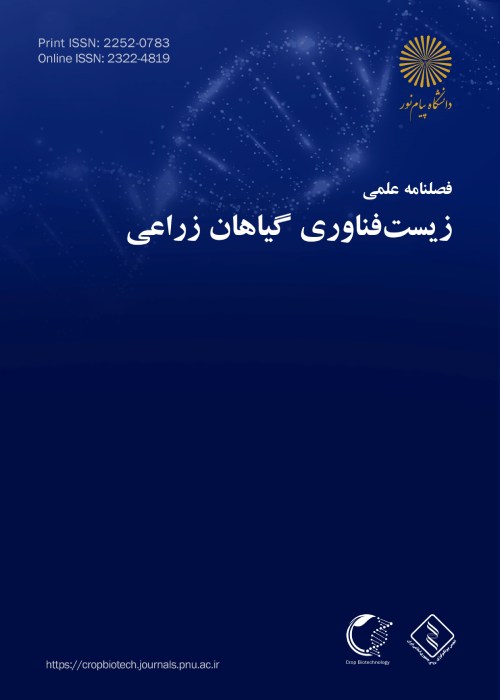Identifying genes related to terpenoids biosynthesis pathway and investigating phylogenetic relationship of different Thymus species using chloroplast data
Author(s):
Article Type:
Research/Original Article (دارای رتبه معتبر)
Abstract:
Thyme species are very important due to the production of secondary metabolites such as terpenoids. Since the identification of key genes such as genes related to terpenoids biosyntesis pathway can play an effective role in plant breeding programs, especially thyme species, the present study was aimed to investigate the transcriptomes of T. daenensis, T. vulgaris, T. lancifolius, T. persicus, T. pubescens to identify key genes in the biosynthesis of monoterpenoids, chloroplast genes sequence and evaluation of similarities and differences among these species. For this purpose, total RNAs extracted from vegetative growth were sent to Macrogene of Korea for sequencing with theIllumina HiSeq 2500 platform. After assembling the sequences using various tools, the best results was selected and transcripts were documented in different databases. Then, according to the documented results, key genes responsible in the synthesis of terpenoids and chloroplast gene sequence were identified, and then phylogenetic relationships among species was investigated. According to the evaluation indicators, the best assembly was a product of Binpacker tools. Based on the results, the sequence of 10 genes involved in the synthesis of terpenoids was obtained. Interestingly, among the identified TPSs, most of the contigs were classified into the TPSb and TPSa classes of terpenoids. The sequence of 73 chloroplast genes was extracted from the transcriptome data and finally the phylogenetic relationship was evaluated according to 400, 70 bp of cpDNA. The study of phylogenetic relationships showed a close genetic relationship between T. daenensi and T.vulgaris which can introduce T. daenensis as an appropriate replacement for T. vulgaris in different purpose, especially in pharmacological applications. The results show that Z. multiflora can most probably be as one of the ancestors of Thymus, which is significantly different from Thymus species in terms of its genetic structure, especially the key genes of the terpene biosynthesis pathway.
Keywords:
Language:
Persian
Published:
Journal of Crop Biotechnology, Volume:12 Issue: 41, 2023
Pages:
23 to 36
magiran.com/p2656074
دانلود و مطالعه متن این مقاله با یکی از روشهای زیر امکان پذیر است:
اشتراک شخصی
با عضویت و پرداخت آنلاین حق اشتراک یکساله به مبلغ 1,390,000ريال میتوانید 70 عنوان مطلب دانلود کنید!
اشتراک سازمانی
به کتابخانه دانشگاه یا محل کار خود پیشنهاد کنید تا اشتراک سازمانی این پایگاه را برای دسترسی نامحدود همه کاربران به متن مطالب تهیه نمایند!
توجه!
- حق عضویت دریافتی صرف حمایت از نشریات عضو و نگهداری، تکمیل و توسعه مگیران میشود.
- پرداخت حق اشتراک و دانلود مقالات اجازه بازنشر آن در سایر رسانههای چاپی و دیجیتال را به کاربر نمیدهد.
In order to view content subscription is required
Personal subscription
Subscribe magiran.com for 70 € euros via PayPal and download 70 articles during a year.
Organization subscription
Please contact us to subscribe your university or library for unlimited access!


